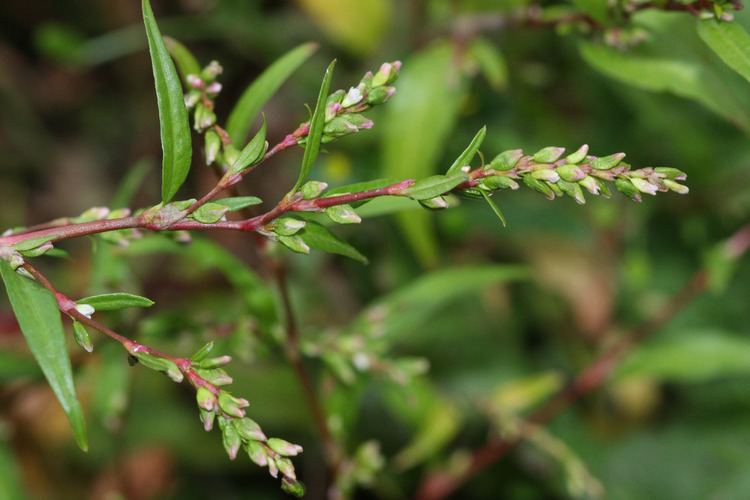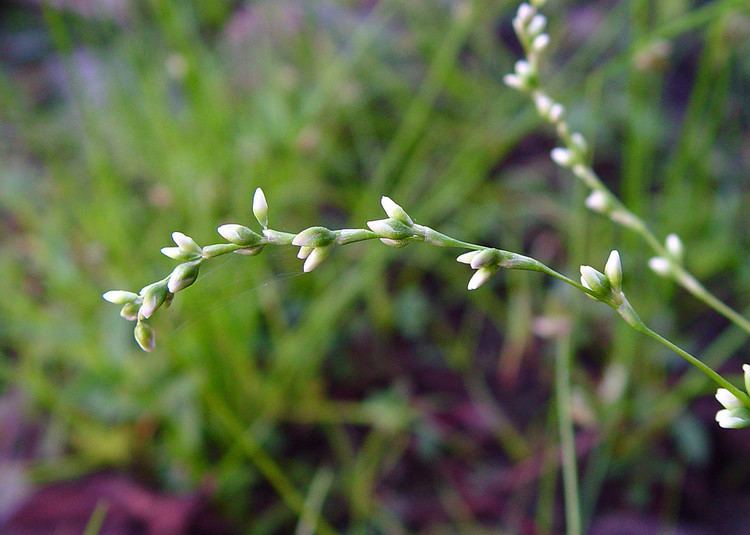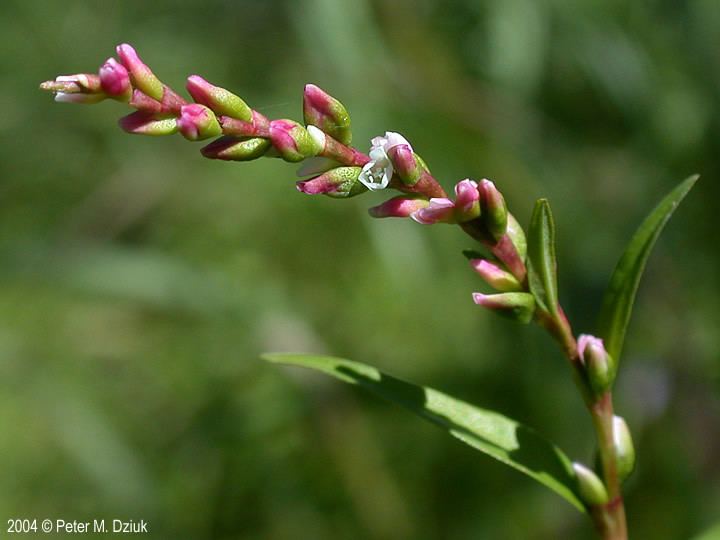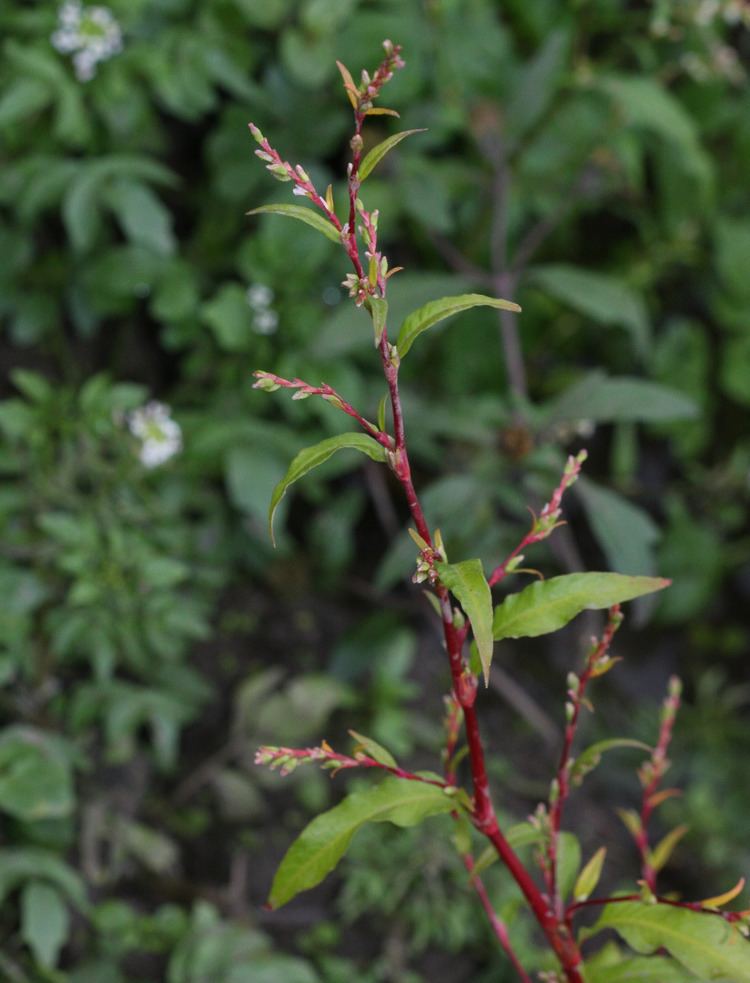Kingdom Plantae Genus Persicaria Higher classification Knotweeds Order Caryophyllales | Family Polygonaceae Scientific name Persicaria hydropiper Rank Species | |
 | ||
Similar Knotweed, Silverweed Cinquefoil, Herb Bennett, Shepherd's Purse, Black Bindweed | ||
Water-pepper, water pepper or marshpepper knotweed (Persicaria hydropiper, syn. Polygonum hydropiper) is a plant of the family Polygonaceae. It grows in damp places and shallow water. It is a widespread plant, found in Australia, New Zealand, temperate Asia, Europe, and North America. It has some use as a spice because of its pungent flavor.
Contents

Description

Water pepper is an annual herb with an erect stem growing to a height of 20 to 70 cm (8 to 28 in). The leaves are alternate and almost stalkless. The leaf blades are narrowly ovate and have entire margins fringed by very short hairs. They are tapering with a blunt apex. Each leaf base has stipules which are fused into a stem-enclosing sheath that is loose and fringed at the upper end. The inflorescence is a nodding spike. The perianth of each tiny flower consists of four or five segments, united near its green base and white or pink at the edges. There are six stamens, three fused carpels and three styles. The fruit is a dark brown oval, flattened nut.
Active ingredients

Water-pepper has several active ingredients. Two bicyclic sesquiterpenoids are present, polygodial (tadeonal, an unsaturated dialdehyde with a drimane backbone) and waburganal, which has been found responsible for the pungent taste (hence its edibility). The plant also contains rutin, a source of the bitter taste impression.

The plant contains an essential oil (0.5%) which consists of monoterpenoids and sesquiterpenoids: α-pinene, β-pinene, 1,4-cineol, fenchone, α-humulene, β-caryophyllene, trans-β-bergamotene. Carboxylic acids (cinnamic, valeric and caproic acid) and their esters were present in traces. The composition depends strongly on genetic factors.
Edibility

In Japan this plant's leaves are used as a vegetable - these are from the cultivar, not the wild type which has a far more pungent taste. Wild waterpepper produces oils that cause skin irritation, and the many acids in its tissues, including formic acid, make the plant unpalatable to livestock. Young red sprouts are used as a sashimi garnish, and are known as beni-tade (紅蓼, red water pepper). Though livestock do not eat the wild type, some insects do, giving rise to the Japanese saying Tade kuu mushi mo sukizuki (蓼食う虫も好き好き, Some insects eat water pepper and like it), which may be translated as “There is no accounting for taste.” or more narrowly “Some prefer nettles.”
The seeds of the water-pepper may be added to wasabi.
Water-pepper sauce are known as Tade-zu (蓼酢, water pepper vinegar) is a sauce traditionally made from finely chopped Water-pepper leaves, soaked in vinegar, and a small amount of steamed-rice. Occasionally, the juice from a squeezed Kabosu is added. In Japanese cuisine it is traditionally used as a complement to grilled Freshwater fish (but usually not other grilled fishes).
